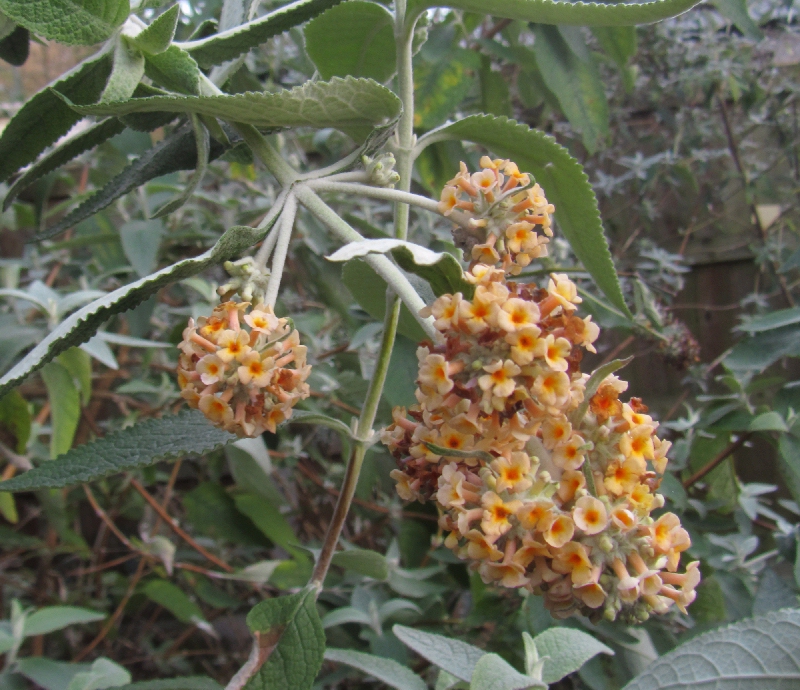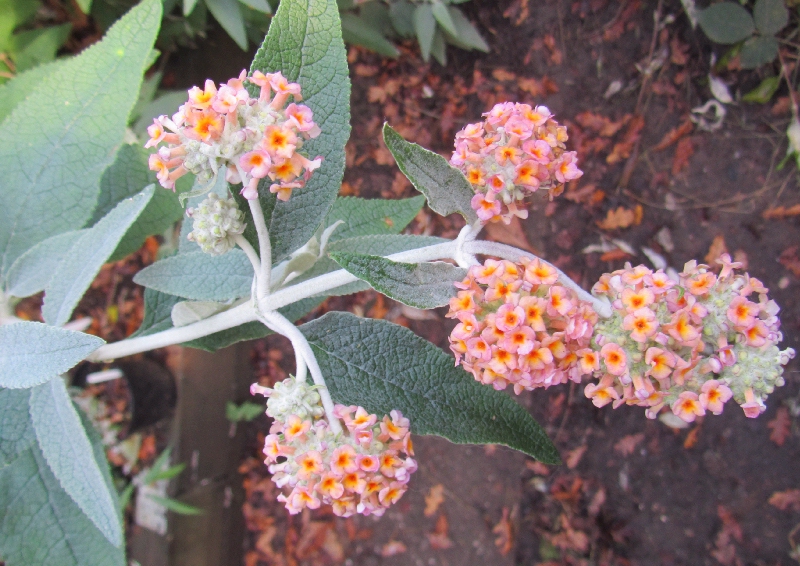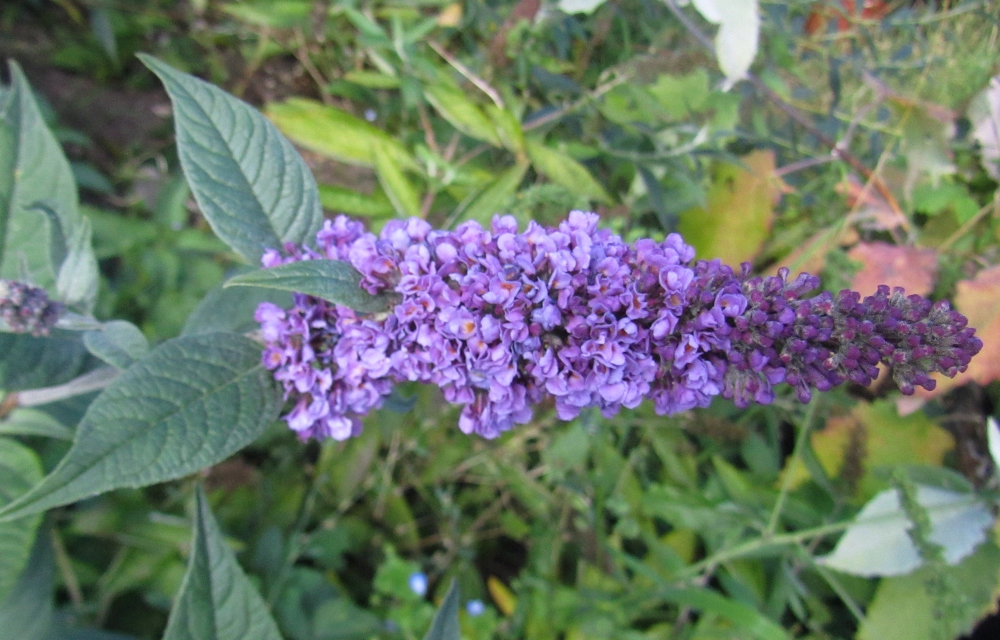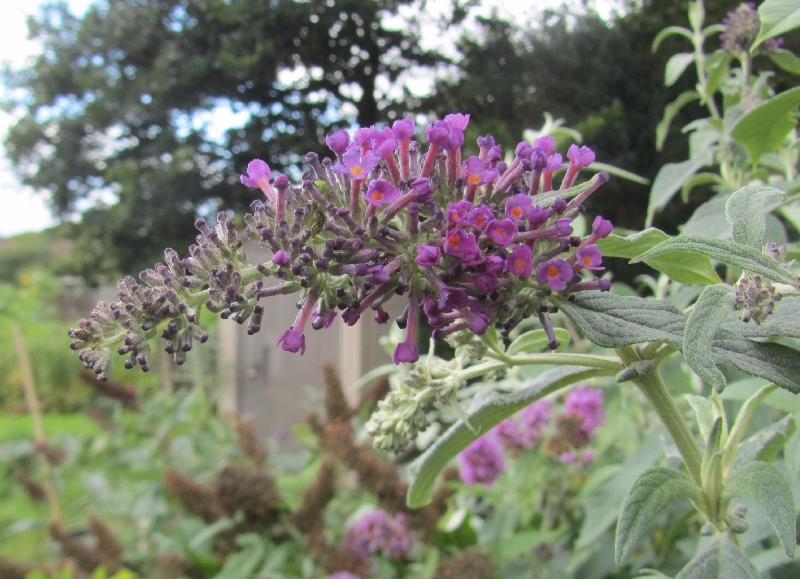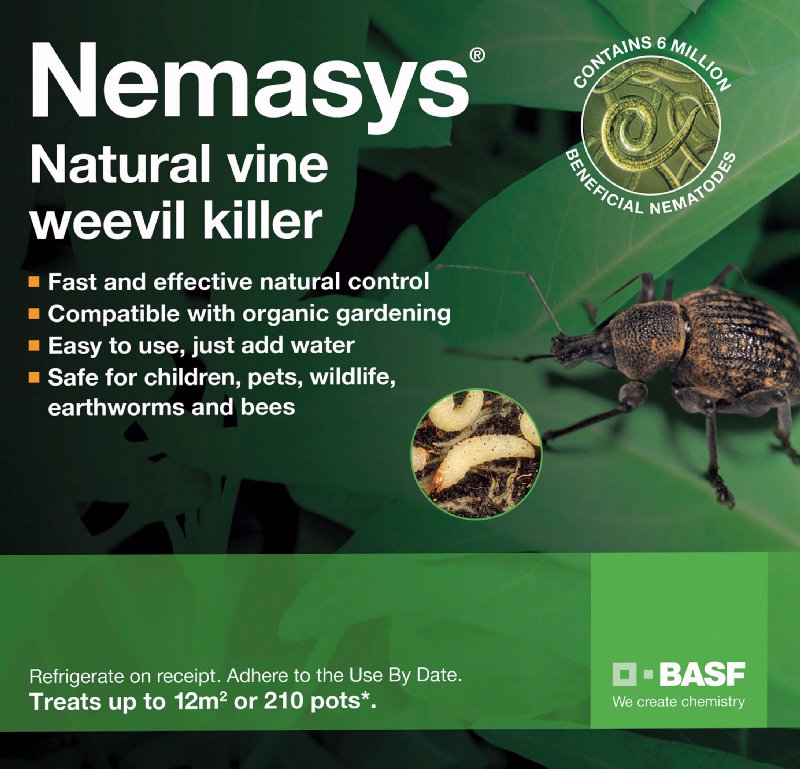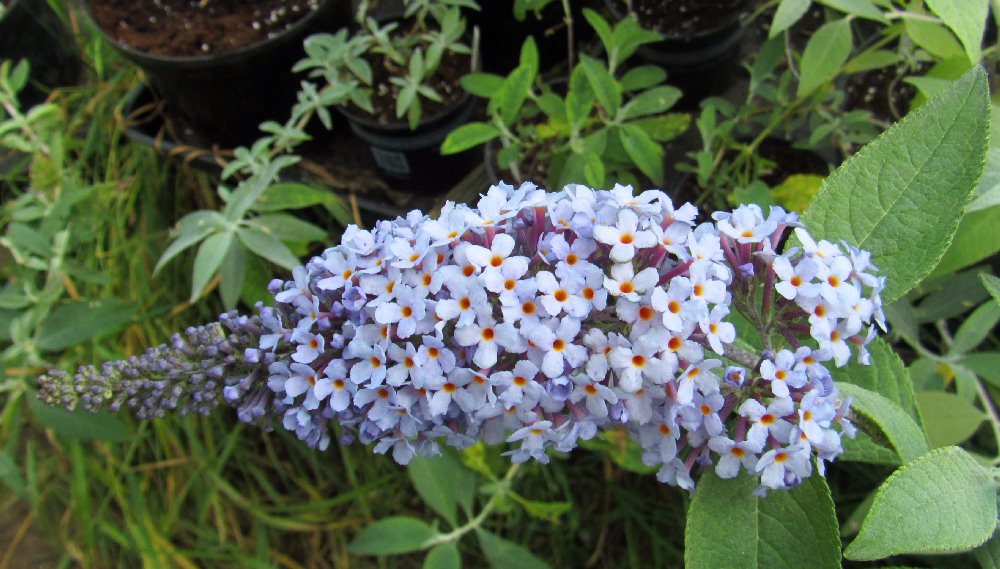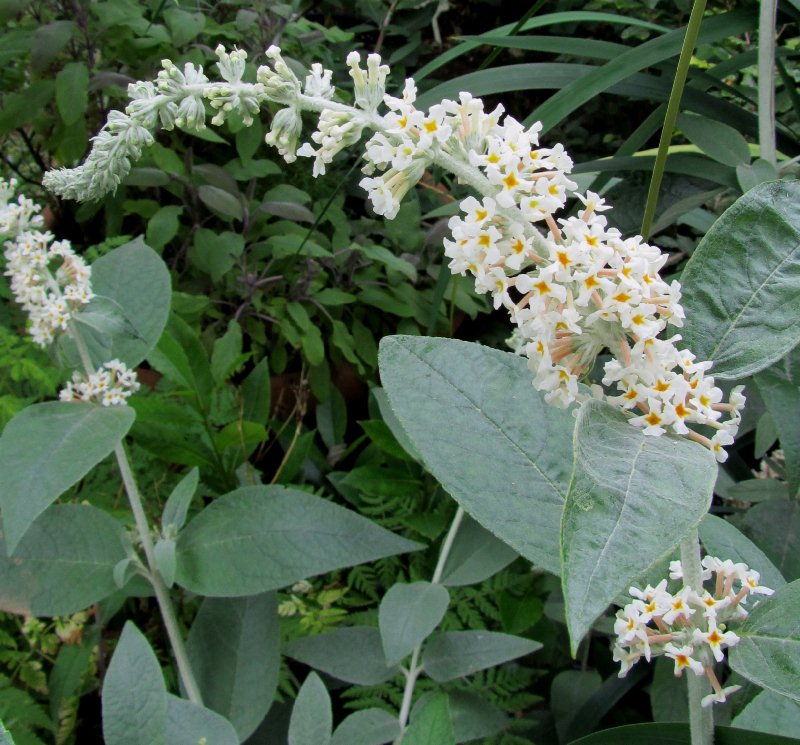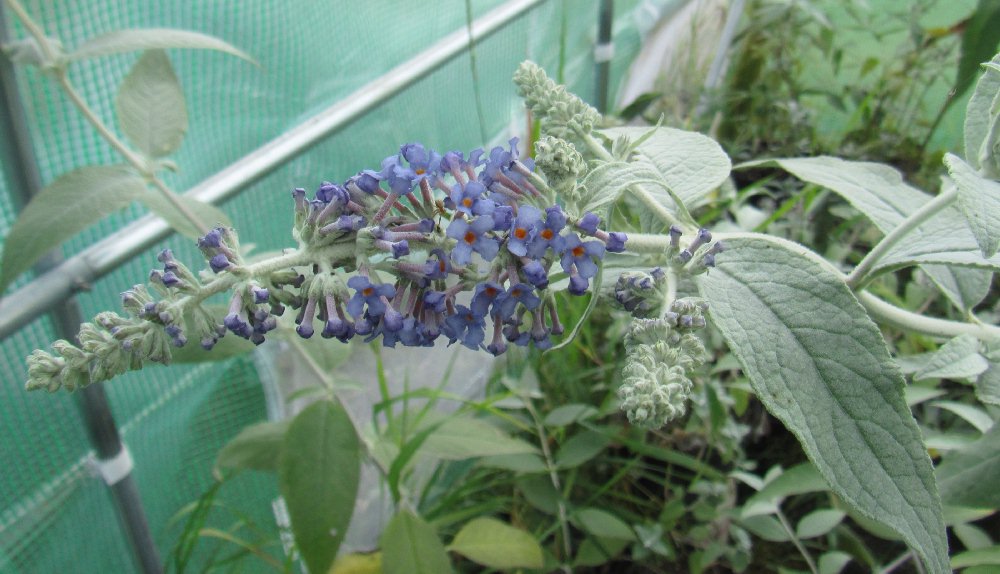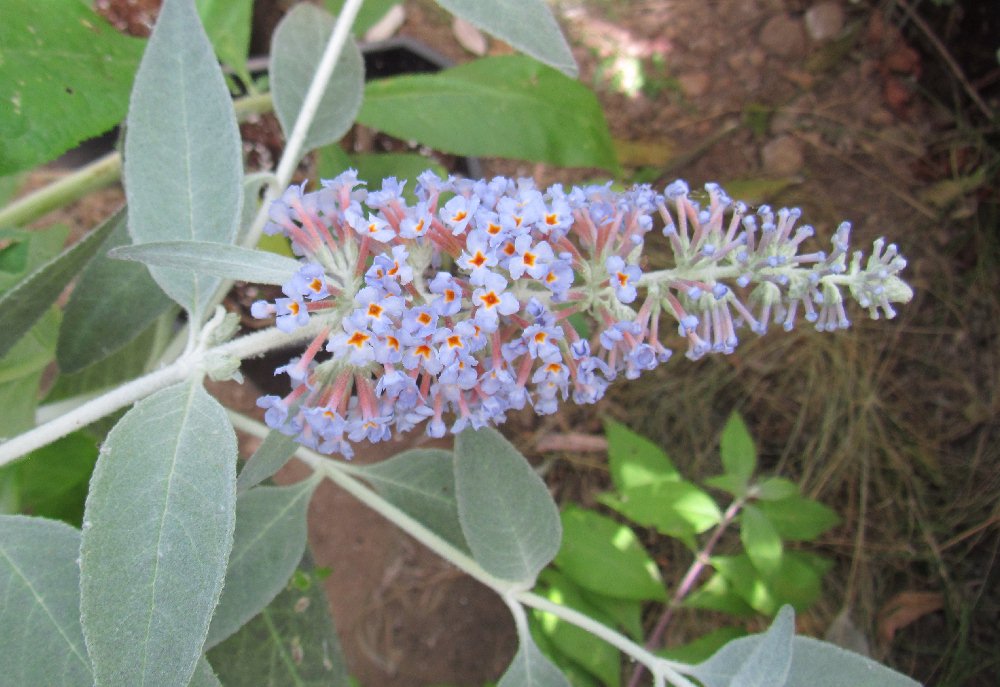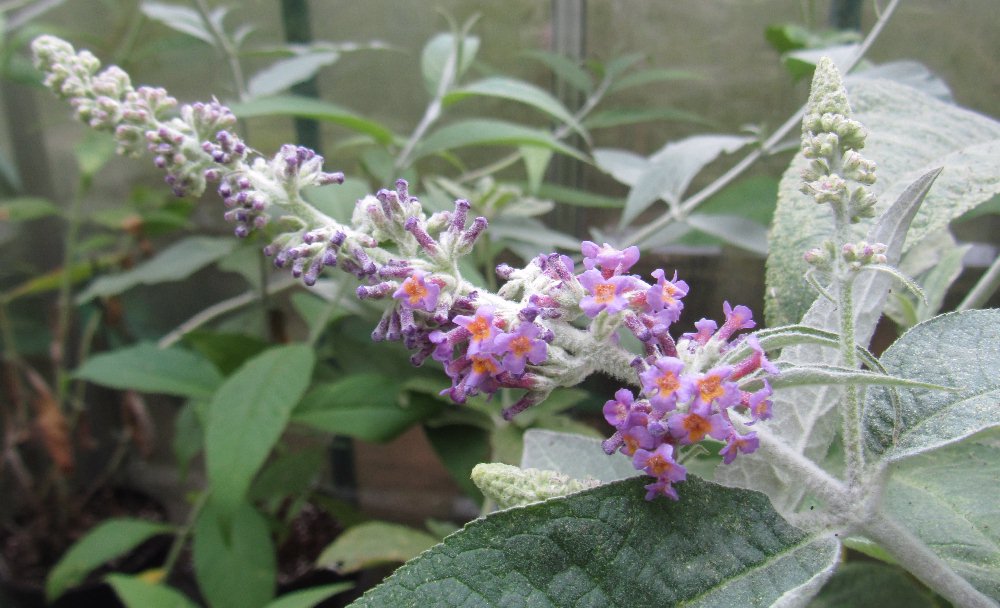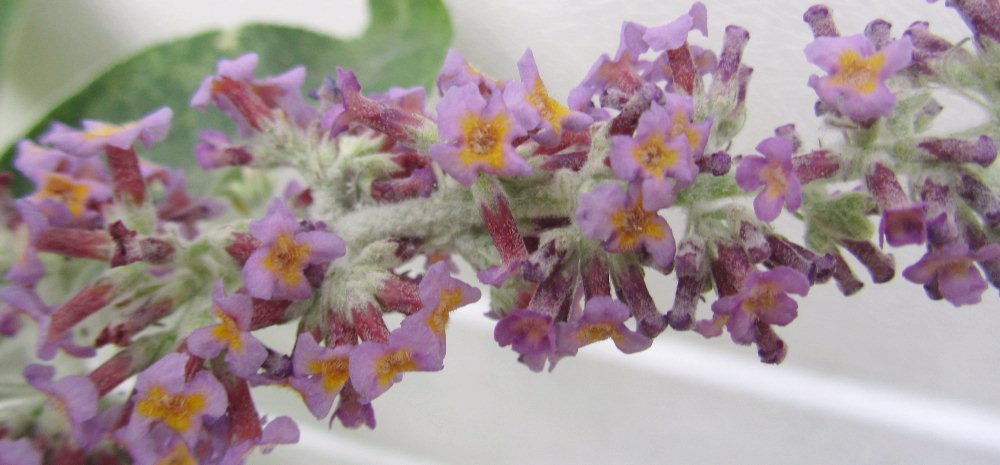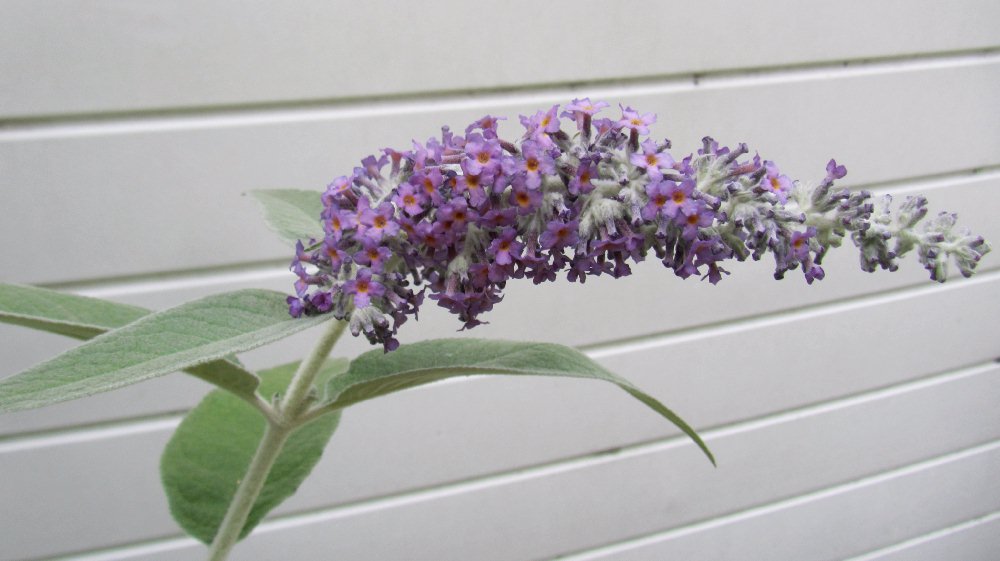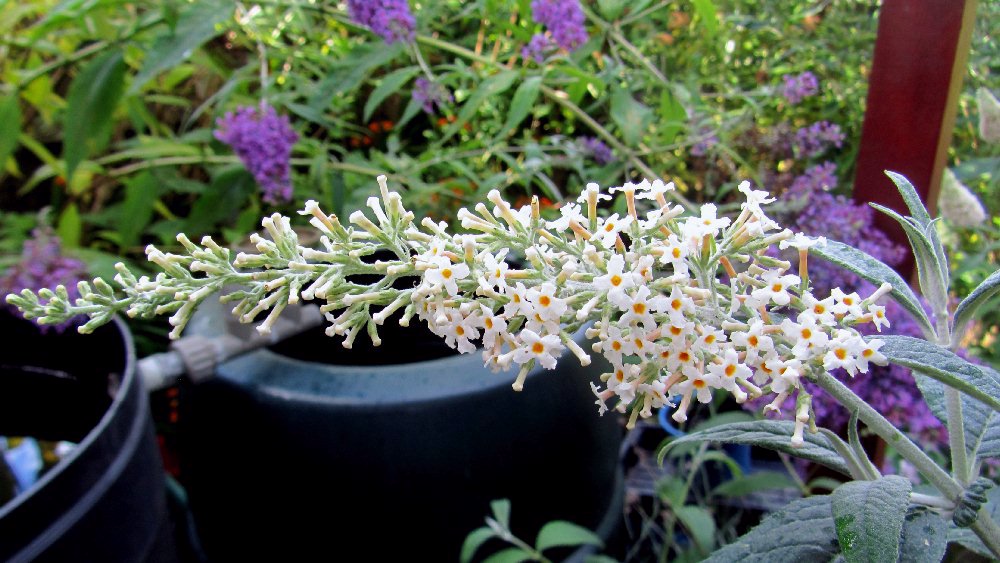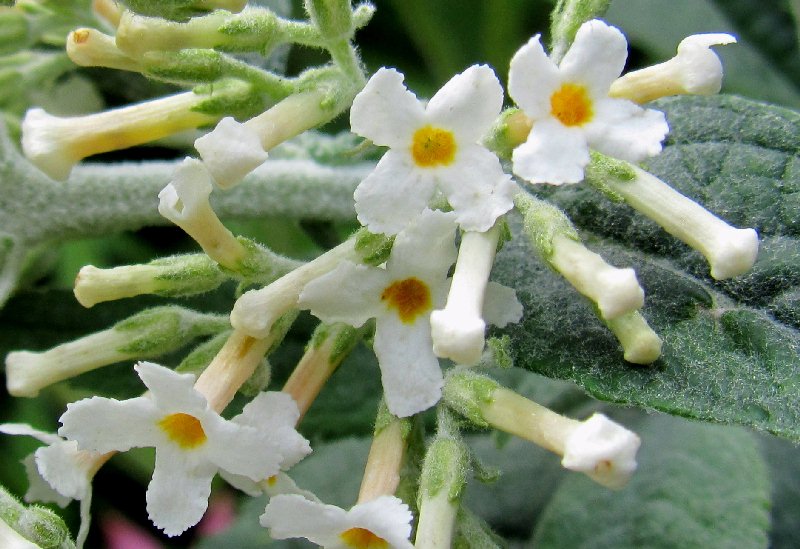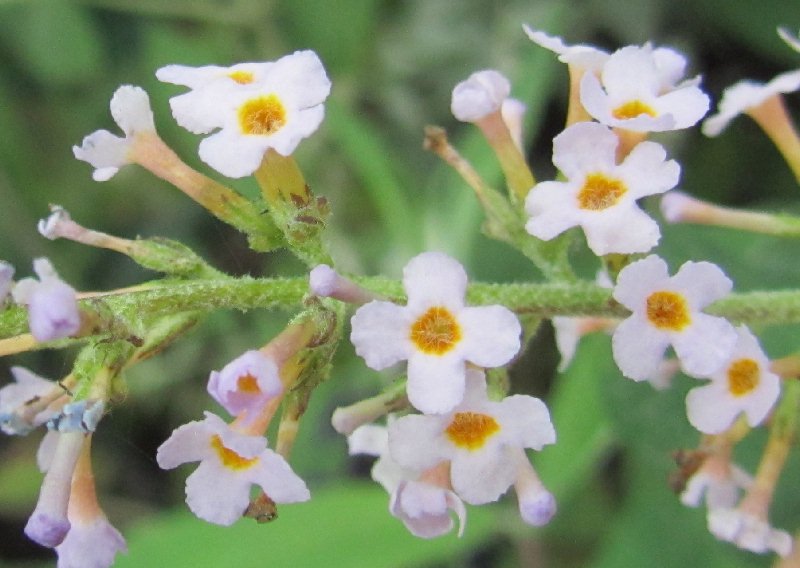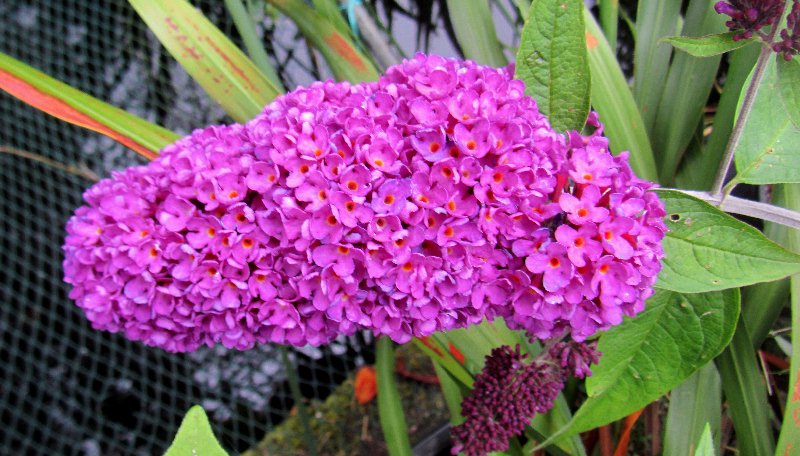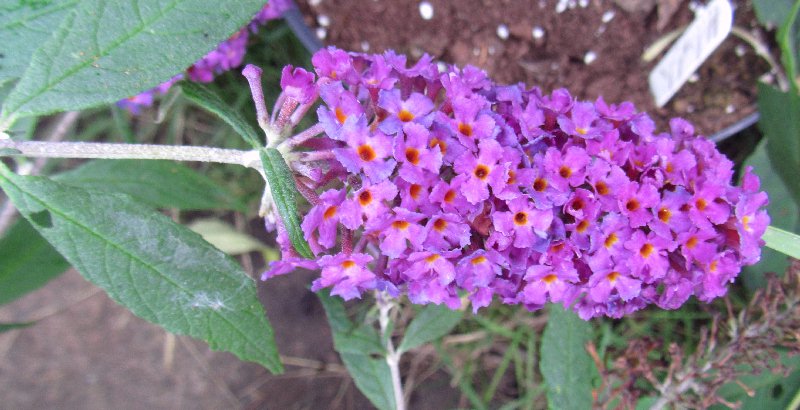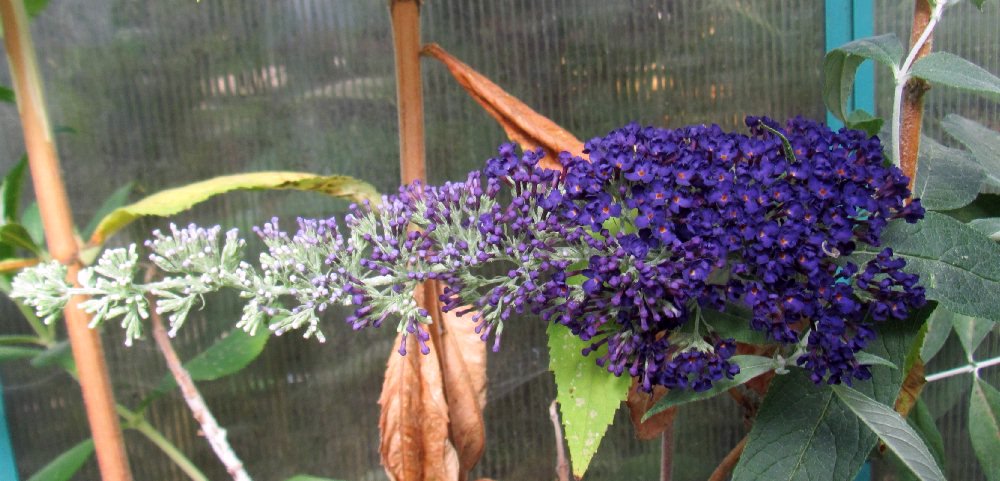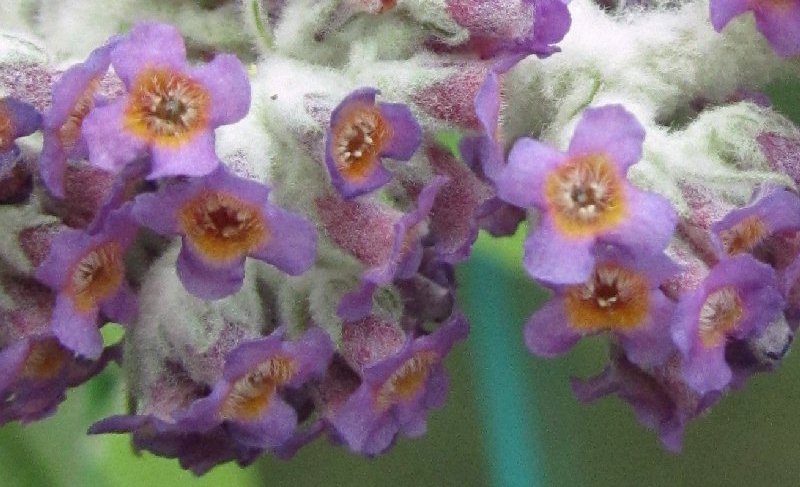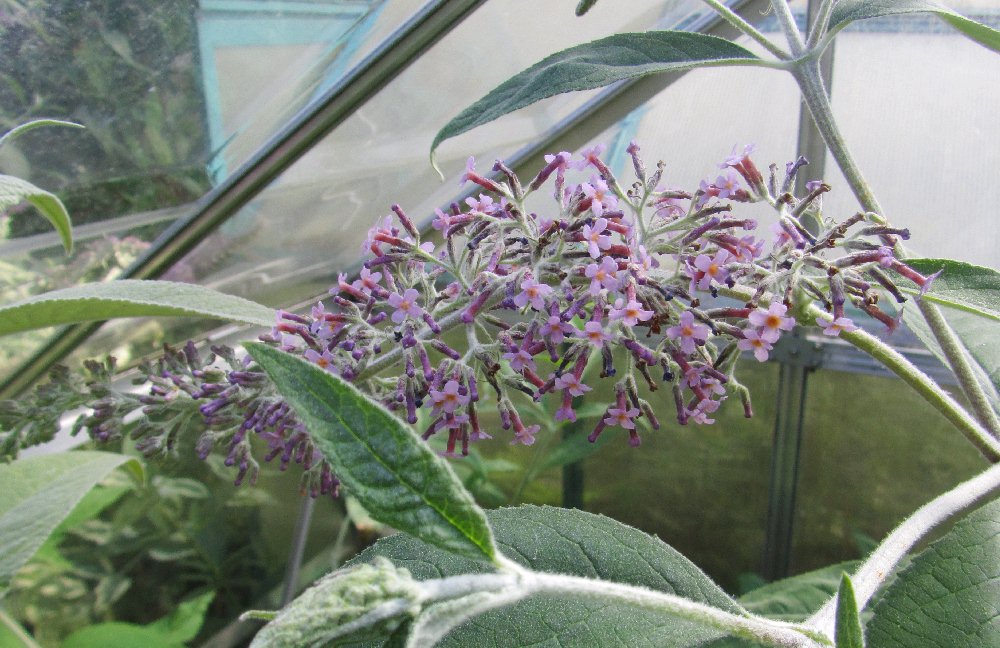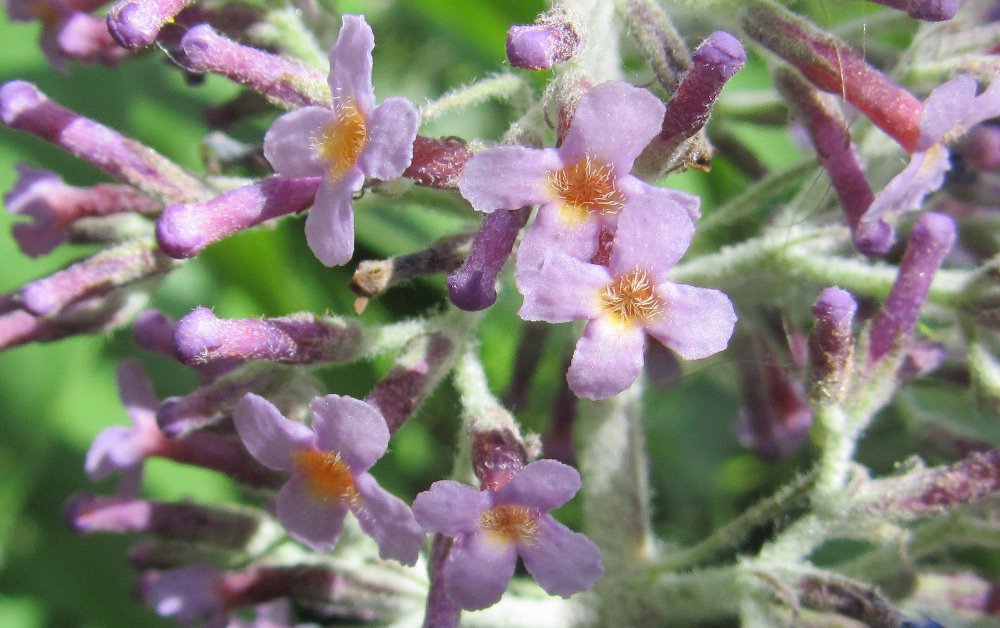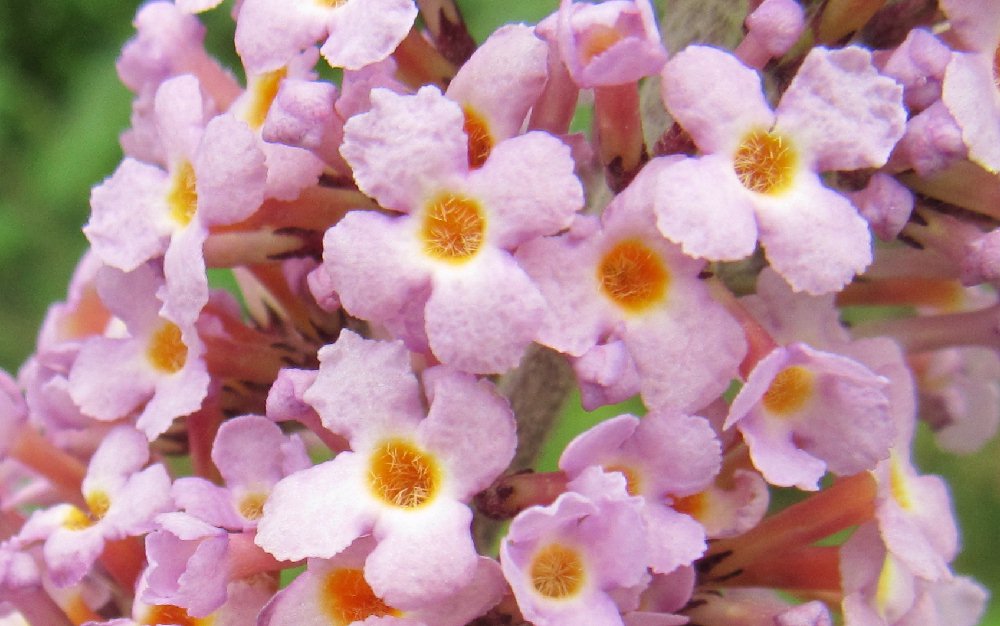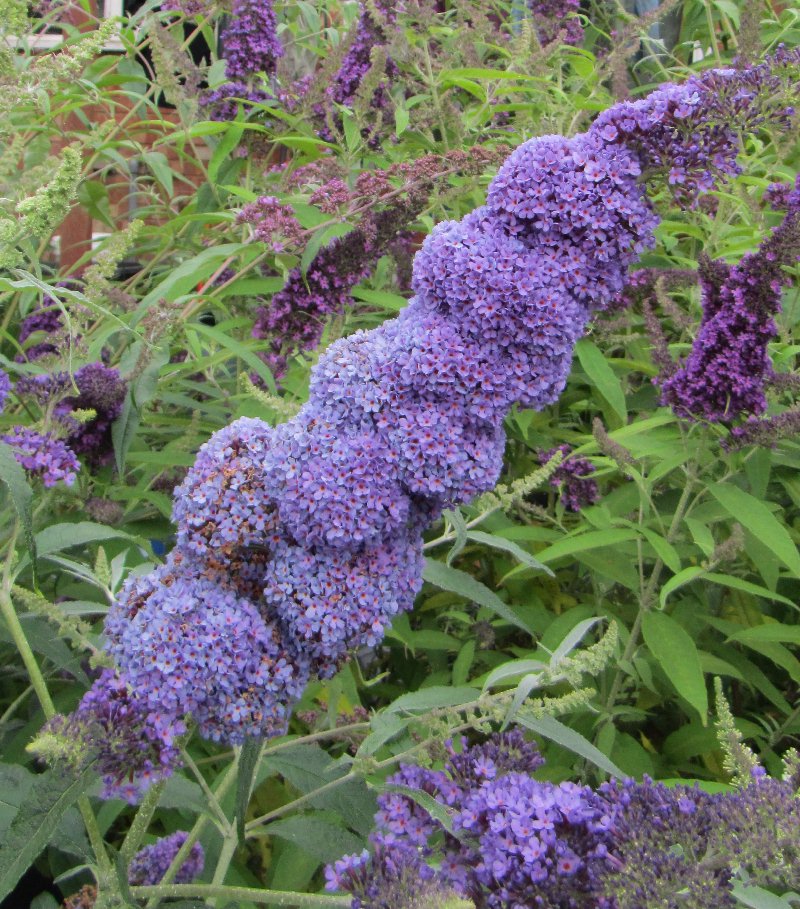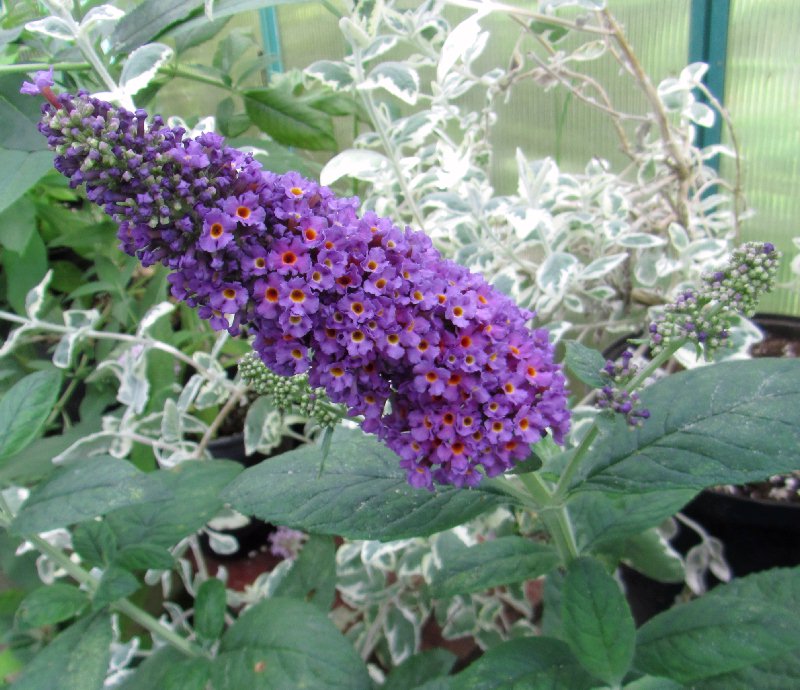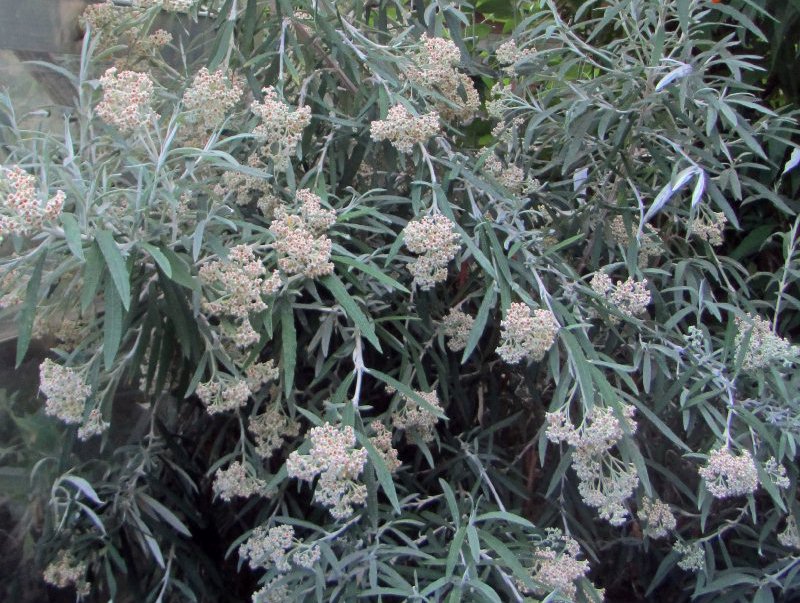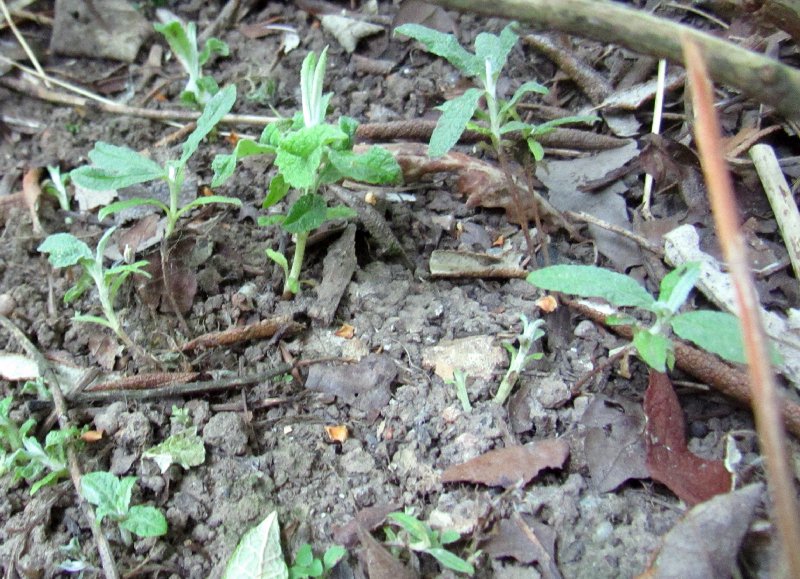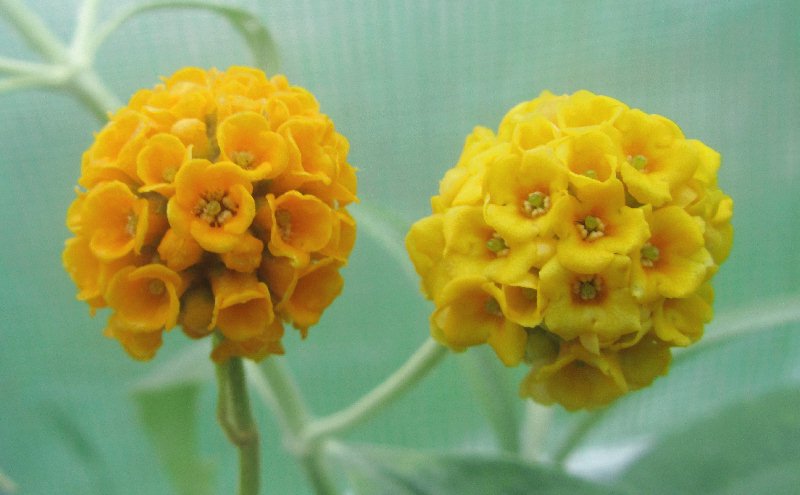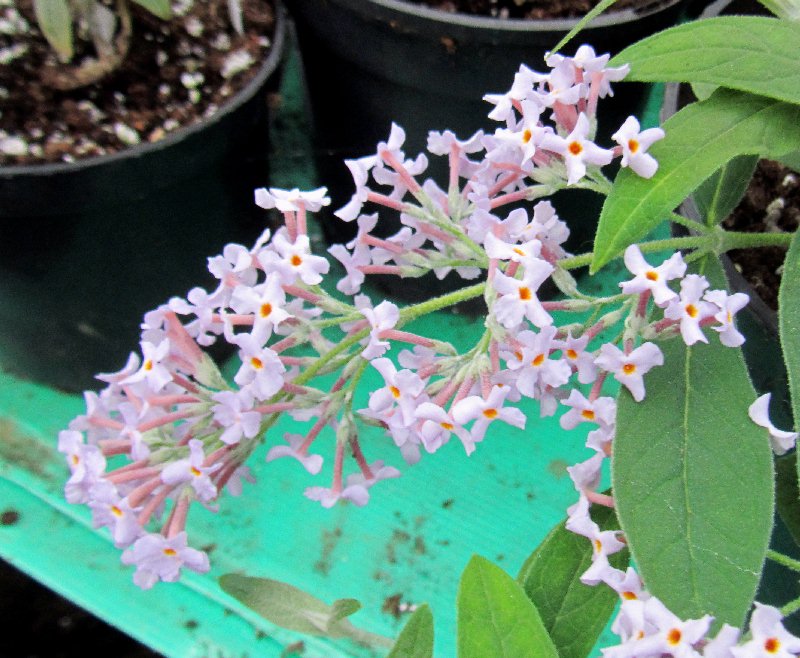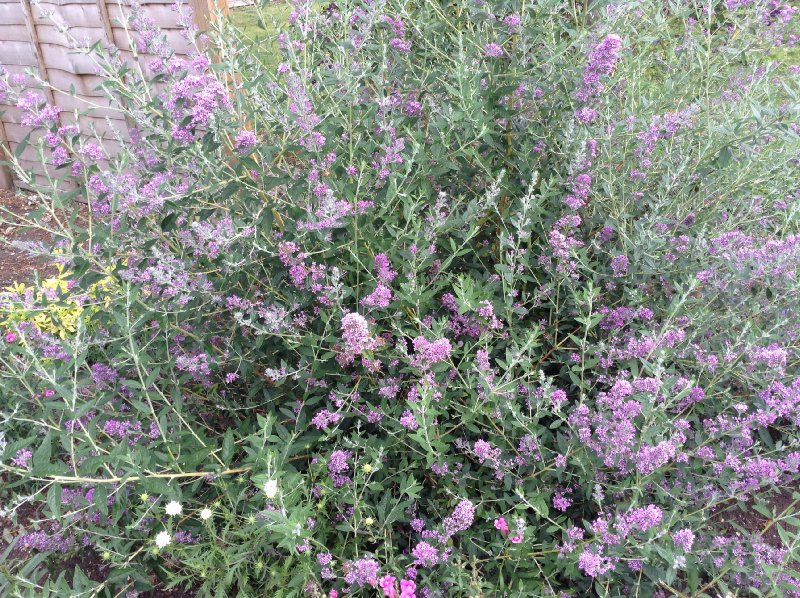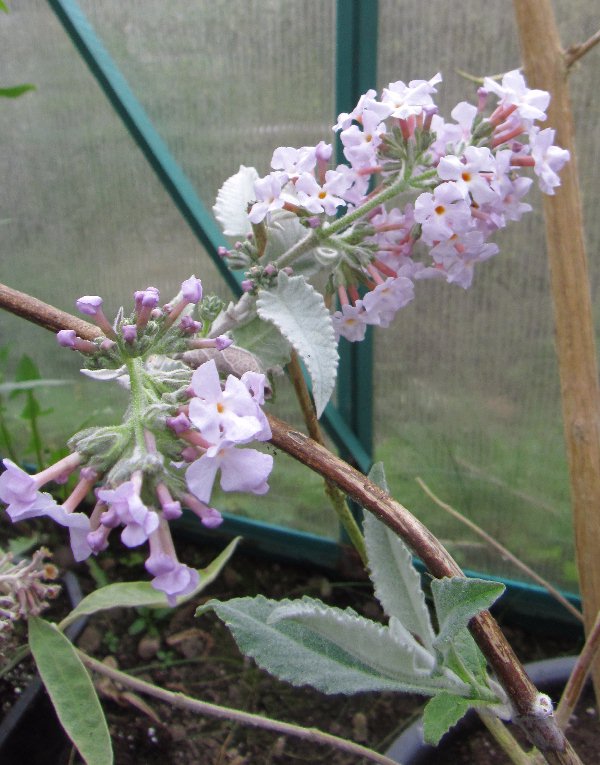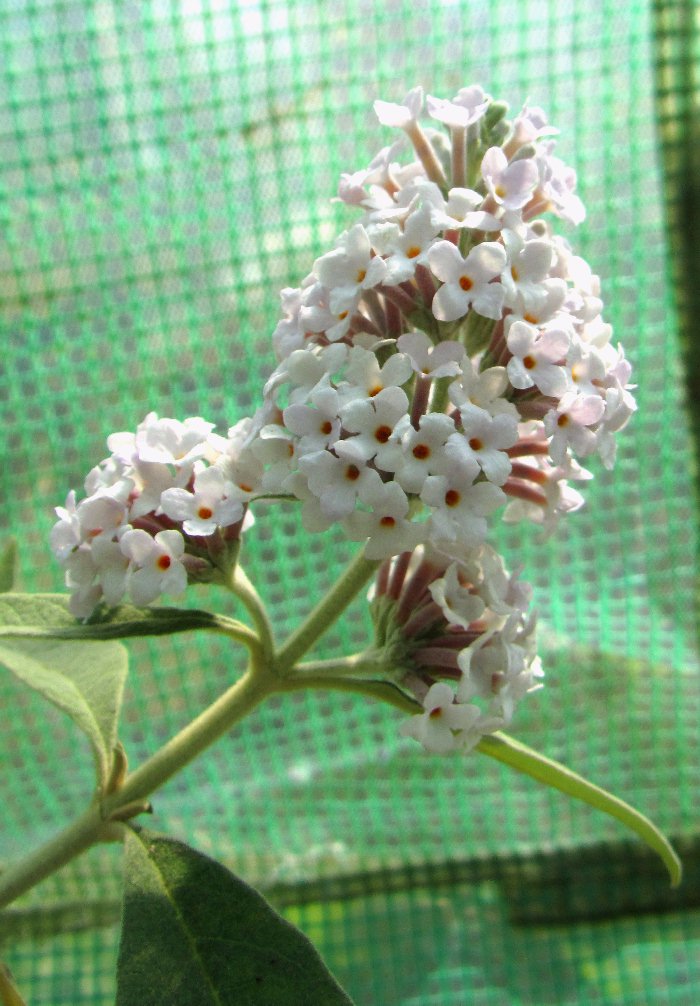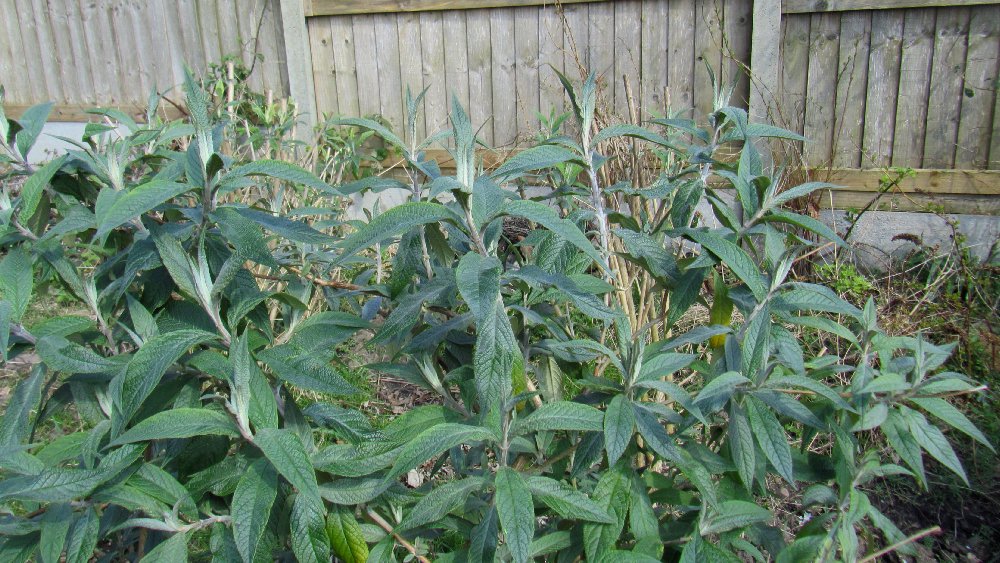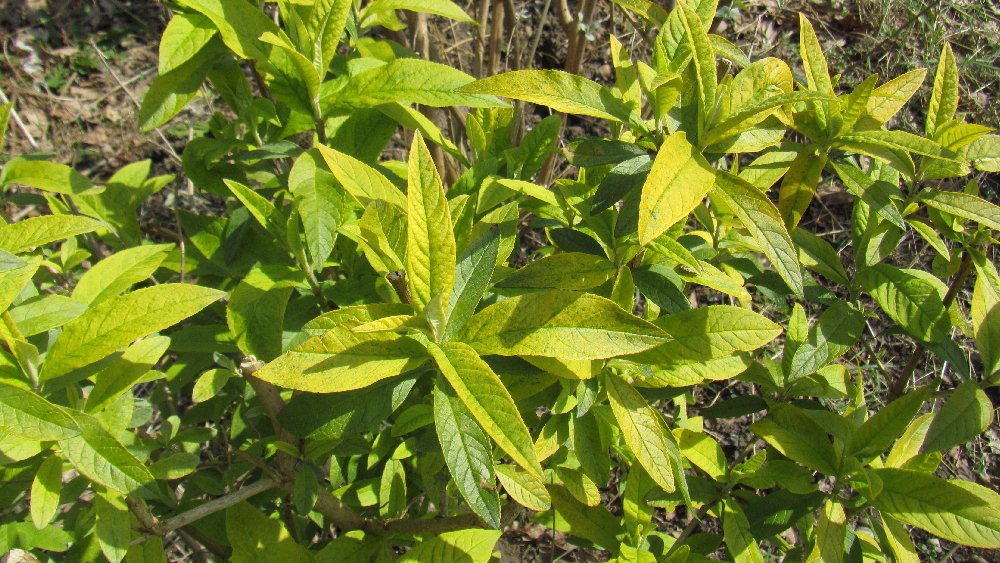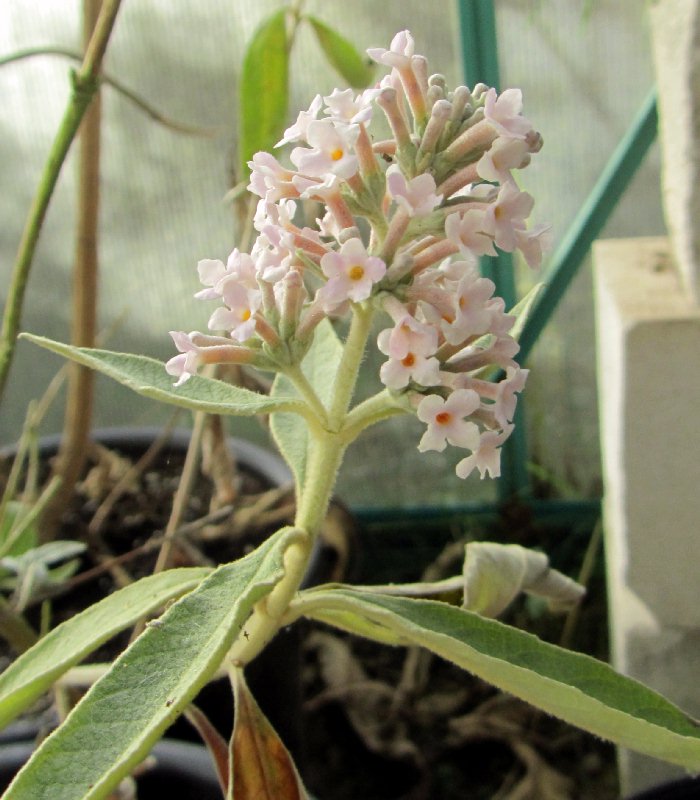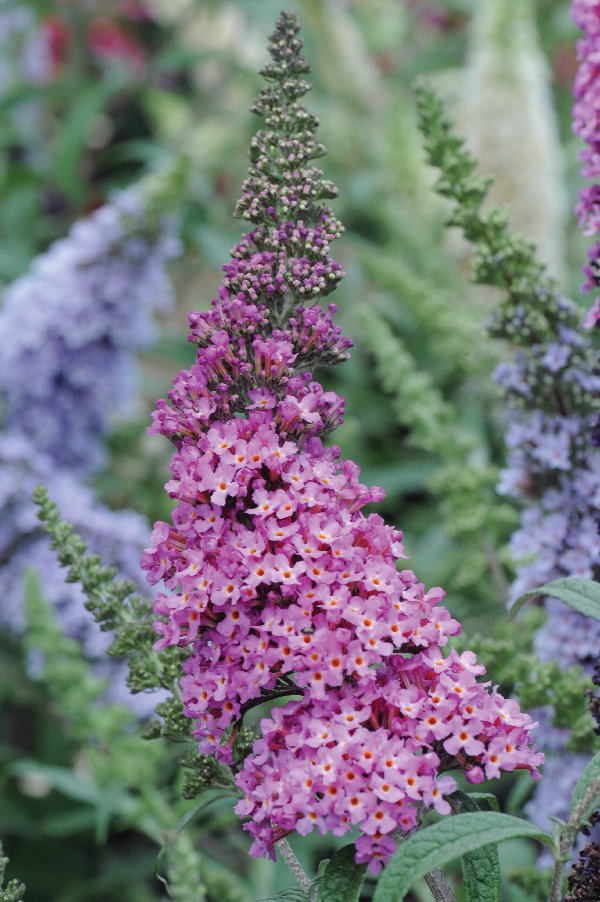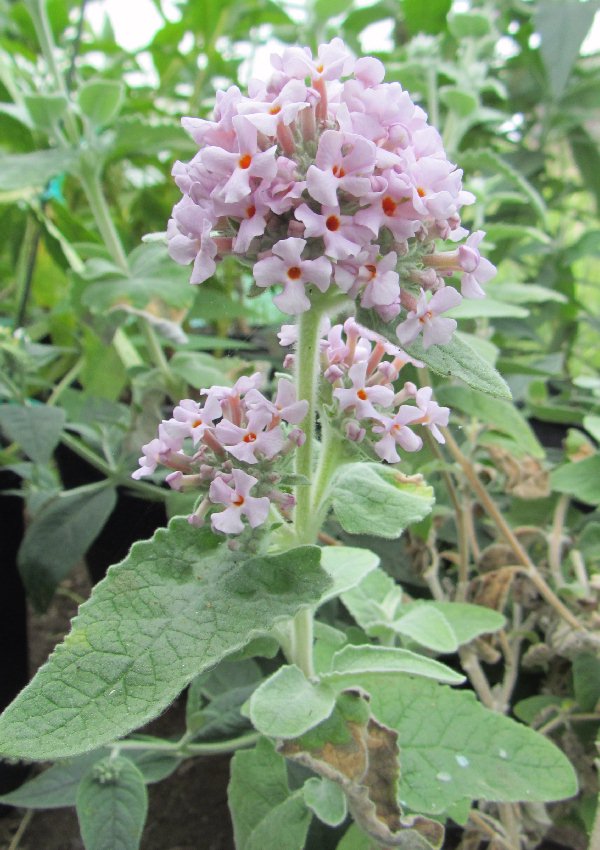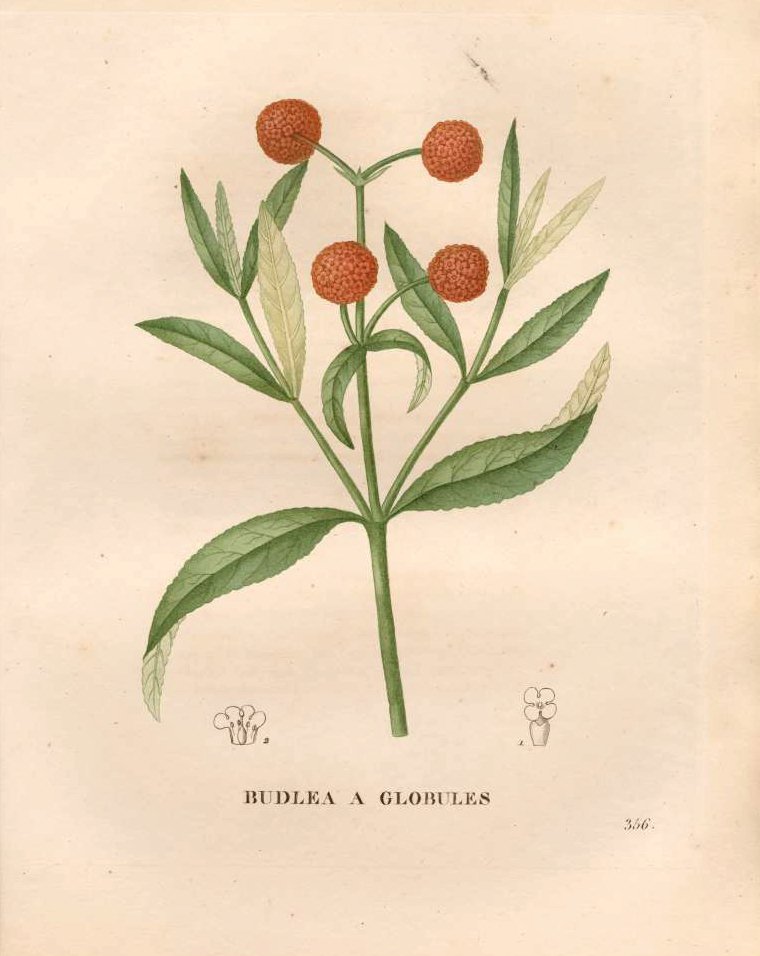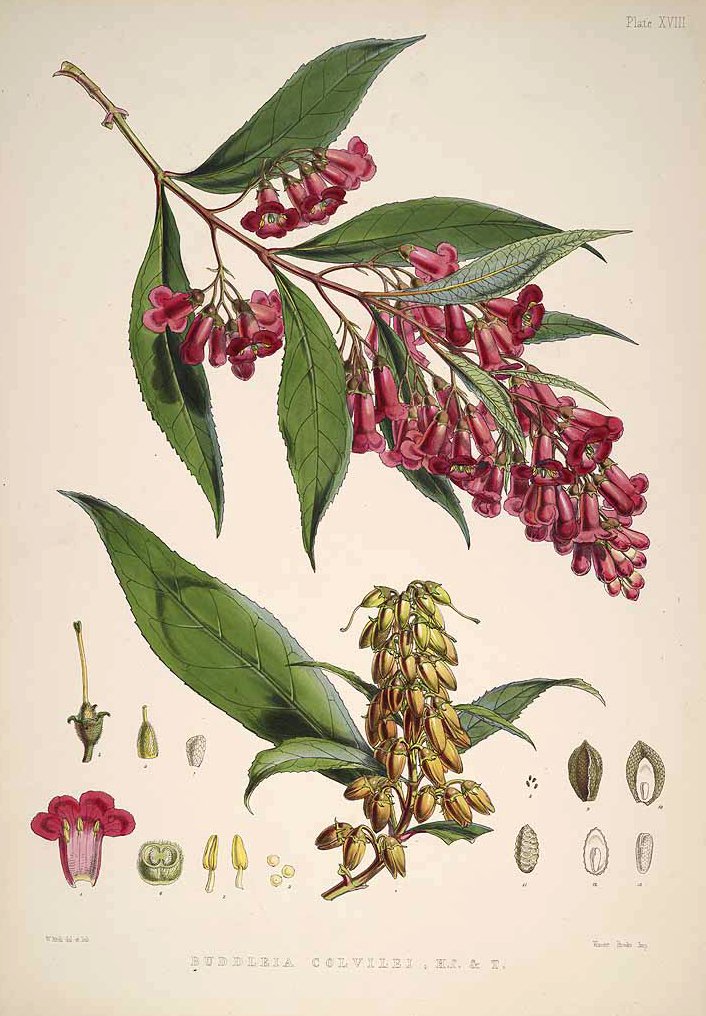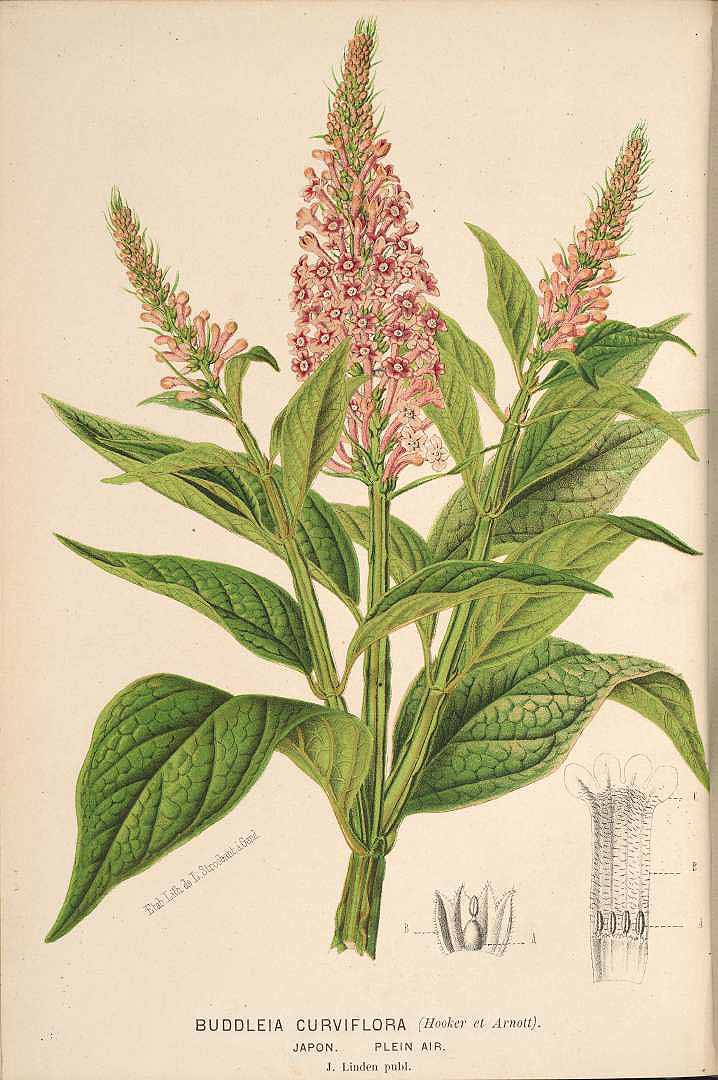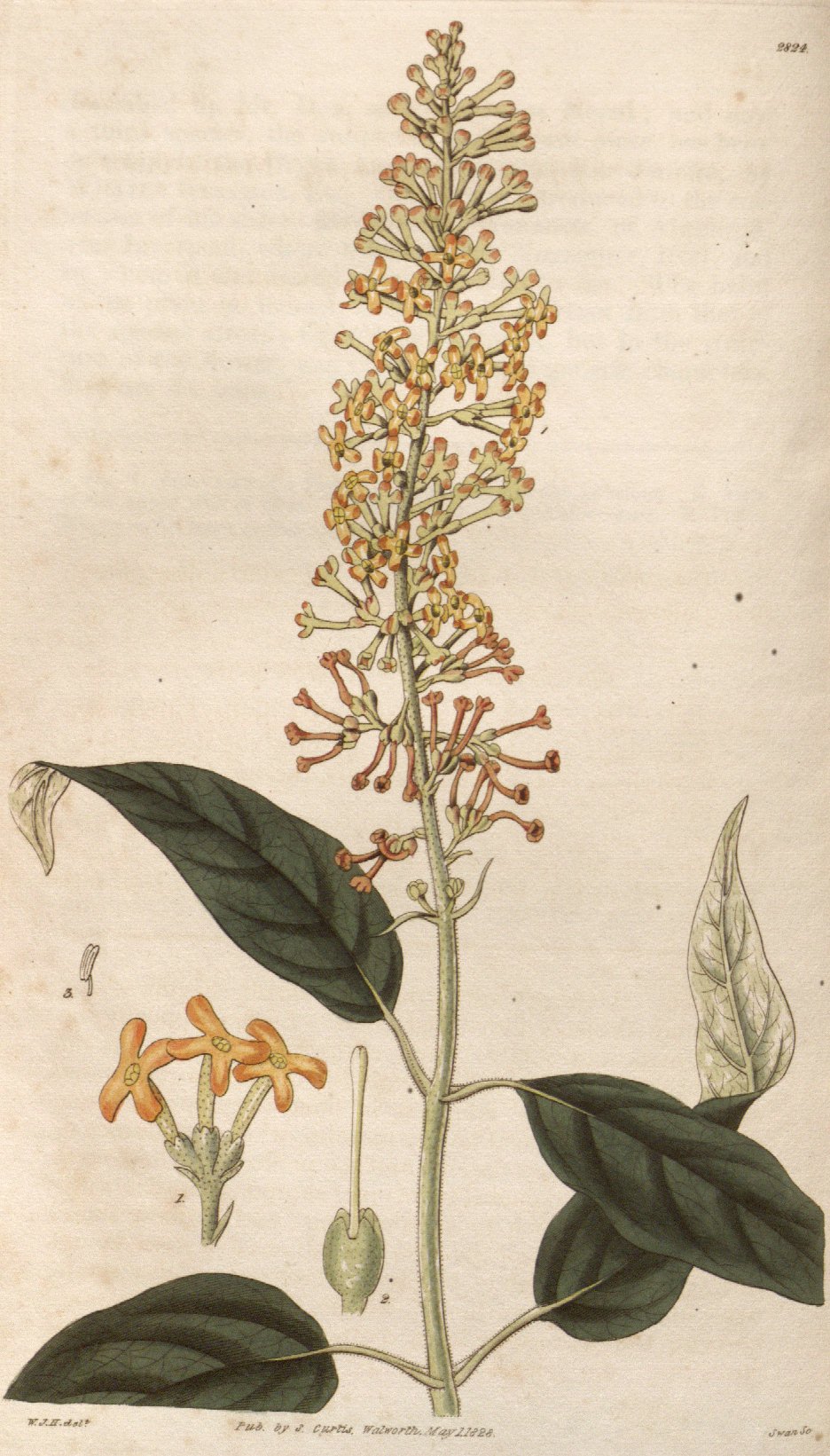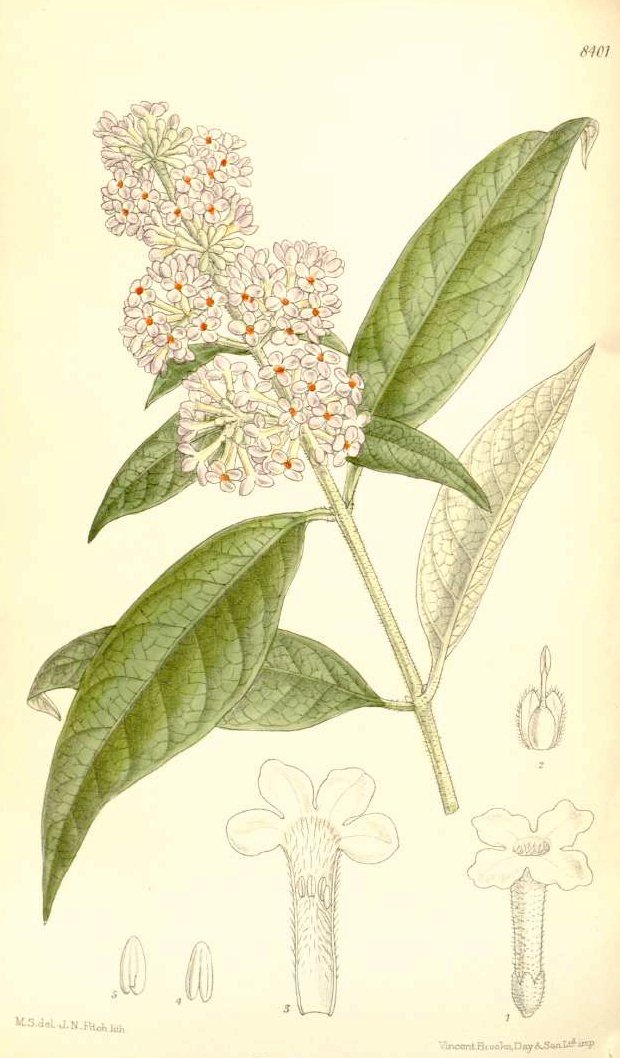
 | |||||||||||||||||||||||||||||||||||||||||||||||||||||||||||||||||
Click images to enlarge | |||||||||||||||||||||||||||||||||||||||||||||||||||||||||||||||||
It's Almost Next YearPosted 29th December 2015Another year in the Buddleja Garden is complete. And there are still a few flowers around such as the Salmon Spheres shown right. The colour is more yellow than it was back on October, lacking the pink tones that give it its name. More on the strange weather that has allowed for these Christmas Buddleja flowers in the New Year. The Diary for 2016 will start very soon and can be found HERE! | |||||||||||||||||||||||||||||||||||||||||||||||||||||||||||||||||
|
| |||||||||||||||||||||||||||||||||||||||||||||||||||||||||||||||||
Salmon SpheresPosted 1st November 2015Every autumn I am amazed by the late flowers that appear on Salmon Spheres (B. globosa X B. crispa), which are always better than its spring flowers. They are even later than usual this year because the summer was not very good. It has proved quite hardy and everygreen over the past few years and flowers reliably. I always remark how surprised I am it is not more popular with gardeners. Today was the warmest November day on record and the flowers displayed their orange and pink tones wonderfully in the late sunshine. | |||||||||||||||||||||||||||||||||||||||||||||||||||||||||||||||||
|
| |||||||||||||||||||||||||||||||||||||||||||||||||||||||||||||||||
Assessing Some Dwarf Buddleja Varieties
| Lo and Behold Blue Chip Lo and Behold Purple Chip | ||||||||||||||||||||||||||||||||||||||||||||||||||||||||||||||||
|
| |||||||||||||||||||||||||||||||||||||||||||||||||||||||||||||||||
Time to Treat Against Vine WeevilPosted 19th September 2015Vine weevil adults are a nuisance but their grubs are particularly nasty little brutes. The eggs are laid in late summer just under the surface of the soil that then hatch into root-destroying machines. Buddlejas in reasonably heavy soil are fairly safe but those in raised beds or pots in with lighter soil mix are vulbnerable, especially some of the more exotic species. One of the points of growing Buddleja is to provide nectar for pollinators. Persistent, systemic insecticides are not an option as the residue can find its way into the nectar. The alternative is a biological control, nematodes in this case, and I always treat my most valuable plants with a product called Nemasys. Short, I presume, for Nematode System - great word-play. More importantly it is very effective. | |||||||||||||||||||||||||||||||||||||||||||||||||||||||||||||||||
|
| |||||||||||||||||||||||||||||||||||||||||||||||||||||||||||||||||
Autumn BuddlejaPosted 12th September 2015Autumn Beauty is a very late flowering plant (about now), only tentatively identified as B. davidii due to its unusual phenology. This makes it a very useful nectar source for the butterflies to load up before the winter. It is not a very striking colour, an average lilac-pink, and Peter Moore at Longstock Nursery has bred a better pink version called Longstock Autumn Delight. I kept a few open-pollinated seeds of Autumn Beauty to see what sort of seedlings I might get. Thus far the late flowering trait seems to be dominant and my favourite seedling is a creamy lavender. I will have to wait a whole year now to see if the late flowering is a genuine trait or whether this is actually because the plant is immature. I have finally gotten around to re-doing the Buddleja Garden logo as the old one was not very good. I can't believe I left it so long! | My seedling of Autumn Beauty is a creamy Lavender, but will it wait until autumn to flower next year?
| ||||||||||||||||||||||||||||||||||||||||||||||||||||||||||||||||
|
| |||||||||||||||||||||||||||||||||||||||||||||||||||||||||||||||||
Buddleja Hybrids
| |||||||||||||||||||||||||||||||||||||||||||||||||||||||||||||||||
|
| |||||||||||||||||||||||||||||||||||||||||||||||||||||||||||||||||
Buddleja Hybrids
| |||||||||||||||||||||||||||||||||||||||||||||||||||||||||||||||||
|
| |||||||||||||||||||||||||||||||||||||||||||||||||||||||||||||||||
Buddleja Hybrids
|
| ||||||||||||||||||||||||||||||||||||||||||||||||||||||||||||||||
|
| |||||||||||||||||||||||||||||||||||||||||||||||||||||||||||||||||
Assessing Some Dwarf Buddleja VarietiesPosted 22nd August 2015I have been growing several of the recently released small Buddlejas. Some have yet to flower this year, Lo and Behold Blue and Purple Chips as well as Flutterby (Free) Petite Snow being particularly tardy. I had big hopes for Flutterby Petite Tutti Fruiti (this series is called Buddleja davidii Free Petite in Europe) when a tiny liner plant produced a particularly bright flower. This plant has grown rather well and bloomed consistently this summer. The flowers are bright and full but seem too heavy for the stems so it has flopped over; perhaps it will toughen up once in the ground. Flutterby Petite Dark Pink is low growing but sturdy with attractive small foliage; the flowers are fairly common looking compared to Tutti Fruitti though. The Buzz Series from Thompson & Morgan is different in concept to the Flutterbys: they are pure bred B. davidii rather than hybrids, selected for small size alone and not for low fertility. Most reach 1.5 metres in height and are quite upright, a lax habit not being considered desirable. Buzz Indigo (Midnight in the USA) was released last year. Plug plants take some establishing and after a year my Buzz Indigo still seems a bit delicate but the flowers are large and sensationally dark, not indigo but a very dark and uniform purple. Again I would want to get this out of a pot and into the ground to really assess just whether it lives up to its potential. I have come across another new Buzz, called Hot Raspberry with shocking pink flowers. So far it is only available in the USA and will probably have a different name when marketed in the UK and Europe. | |||||||||||||||||||||||||||||||||||||||||||||||||||||||||||||||||
|
| |||||||||||||||||||||||||||||||||||||||||||||||||||||||||||||||||
Yet More New Buddleja VarietiesPosted 15th August 2015Lendert de Vos in the Netherlands is introducing a range of compact Buddlejas bred by Ball Ornamentals (USA). They are called Lilac Turtle (BUD 116), Purple Lion (BUD 16), White Swan (BUD 797) and Blue Colibri (no number yet, pictured right). All promise a compact habit and only grow 0.8 to 1.2 metres high/wide. They also claim to be disease-resistant, extremely winter-hardy and sterile. I have no more information at present and these could be renamed for the European market. The number of new dwarf/sterile cultivars now available is totally unsustainable. Those already for sale in the UK have made little impact (i.e. Monty Don hasn't grown one yet!) and several perform very badly in the British climate. More worrying is the fact that many are not sterile at all and often exhibit high seed viability. This might be because they have been rushed into production without exhaustive trialing; Buddleja seedlings can take several years to properly mature, longer than plants that are propagated vegetatively. Right, Blue Colibri (images from Lendert de Vos). | 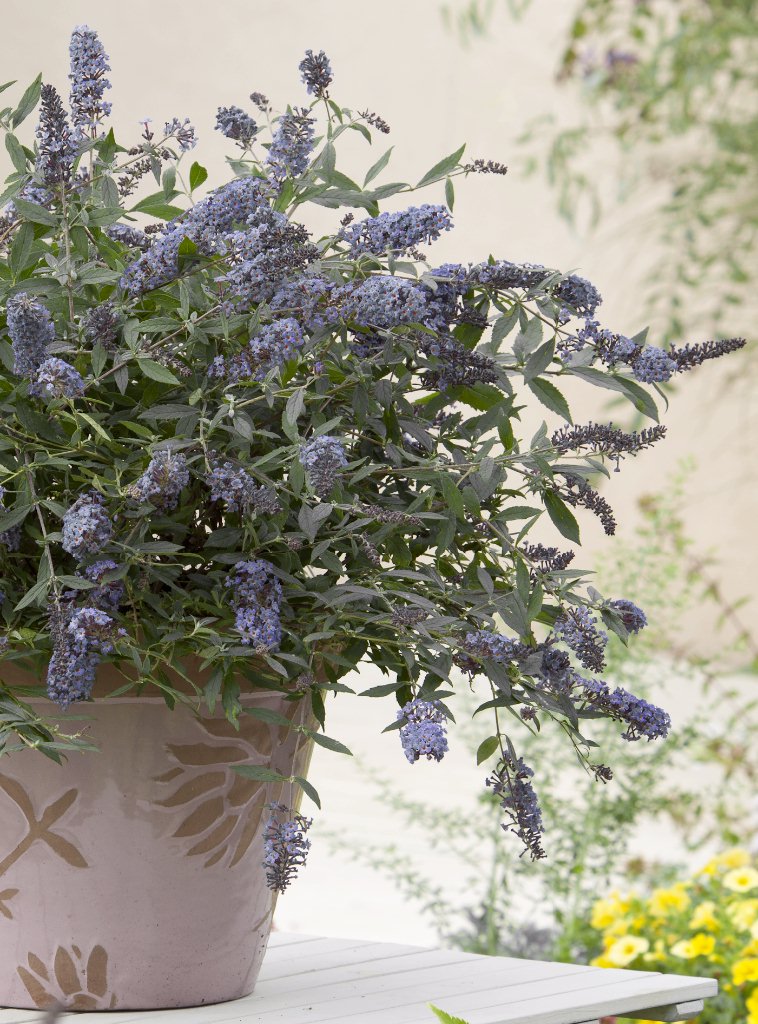
| ||||||||||||||||||||||||||||||||||||||||||||||||||||||||||||||||
|
| |||||||||||||||||||||||||||||||||||||||||||||||||||||||||||||||||
Buddleja VariantsPosted 10th August 2015The genetics of Buddleja davidii isn't well studied and understanding how some features are inherited in tetraploids is well beyond traditional Mendelian genetics. Polyploidy increases the genetic diversity and recessive traits could remain invisible for many generations. So when growing seedlings it's quite likely some novelties will be appear that are unexpected. The seedling shown is the result of a cross to produce a truer blue flower than the parents (currently unnamed), which both have completely normal panicle morphology. And yet this seedling has such a crowded panicle that the individual flowers can't fully open. This isn't a completely unknown B. davidii trait and the old cultivar Pink Pearl has similar crowded panicles. (I am not including Lo and Behold Blue Chip as that is a very complex hybrid.) It could be a spontaneous mutation, although it is more likely this trait has just been lurking in the background. | 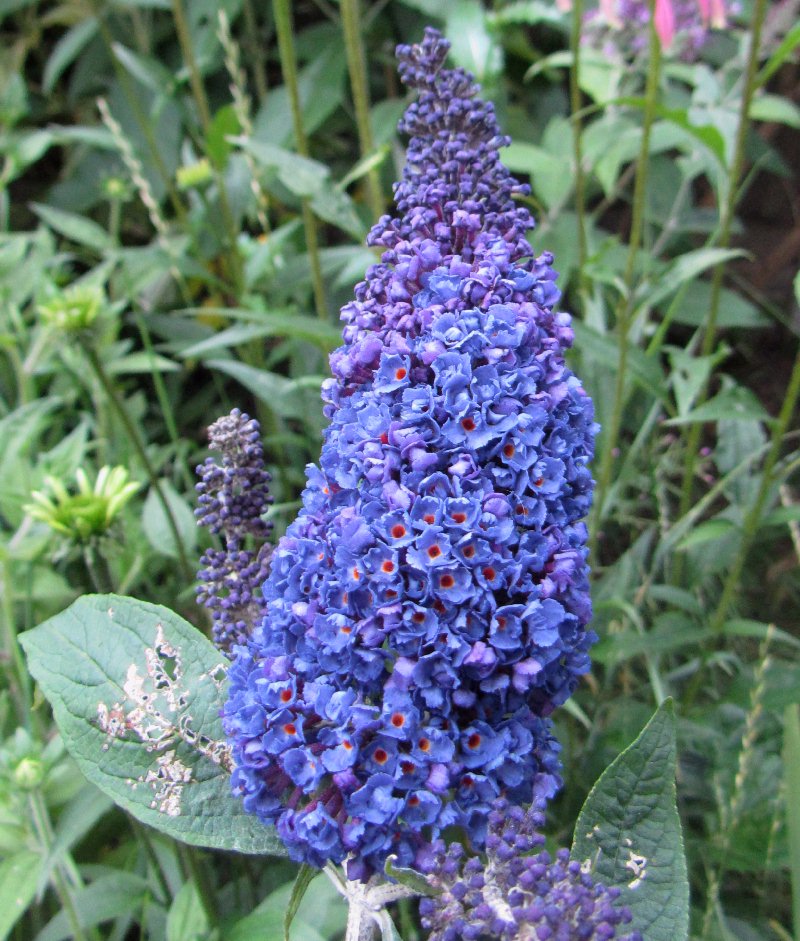
| ||||||||||||||||||||||||||||||||||||||||||||||||||||||||||||||||
|
| |||||||||||||||||||||||||||||||||||||||||||||||||||||||||||||||||
More New Buddleja CultivarsPosted 1st August 2015Another batch of new cultivars has been released in the USA. Firstly, Miss Violet (pictured right, photo from Proven Winners) is a new plant from Dennis Werner, renowned breeder of the Buddleja Chips. A medium size plant with foliage similar to several of his other plants (such as Purple Chip) this almost certainly has some Buddleja lindleyana in its heritage. Last year Walters Gardens released a series called Monarch. This year Blue Knight joins Crown Jewels; Dark Dynasty; Glass Slippers; Jousting Jester; Princess Bride; Queen of Hearts; and Royal Falls. As well as these mid-sized shrubs they are also introducing a series of dwarf hybrids called the Humdinger series. These are Lavender Cupcake (mauve); Little Angel (white); Little Nugget (purple, yellow foliage); Magenta Munchkin (purple-mauve); and Orchid Annie (mauve). Whether these are entirely new or simply renamed cultivars I cannot say, although they will have to compete in an already overcrowded market. Therefore it is rather unlikely these will find their way to Europe. | 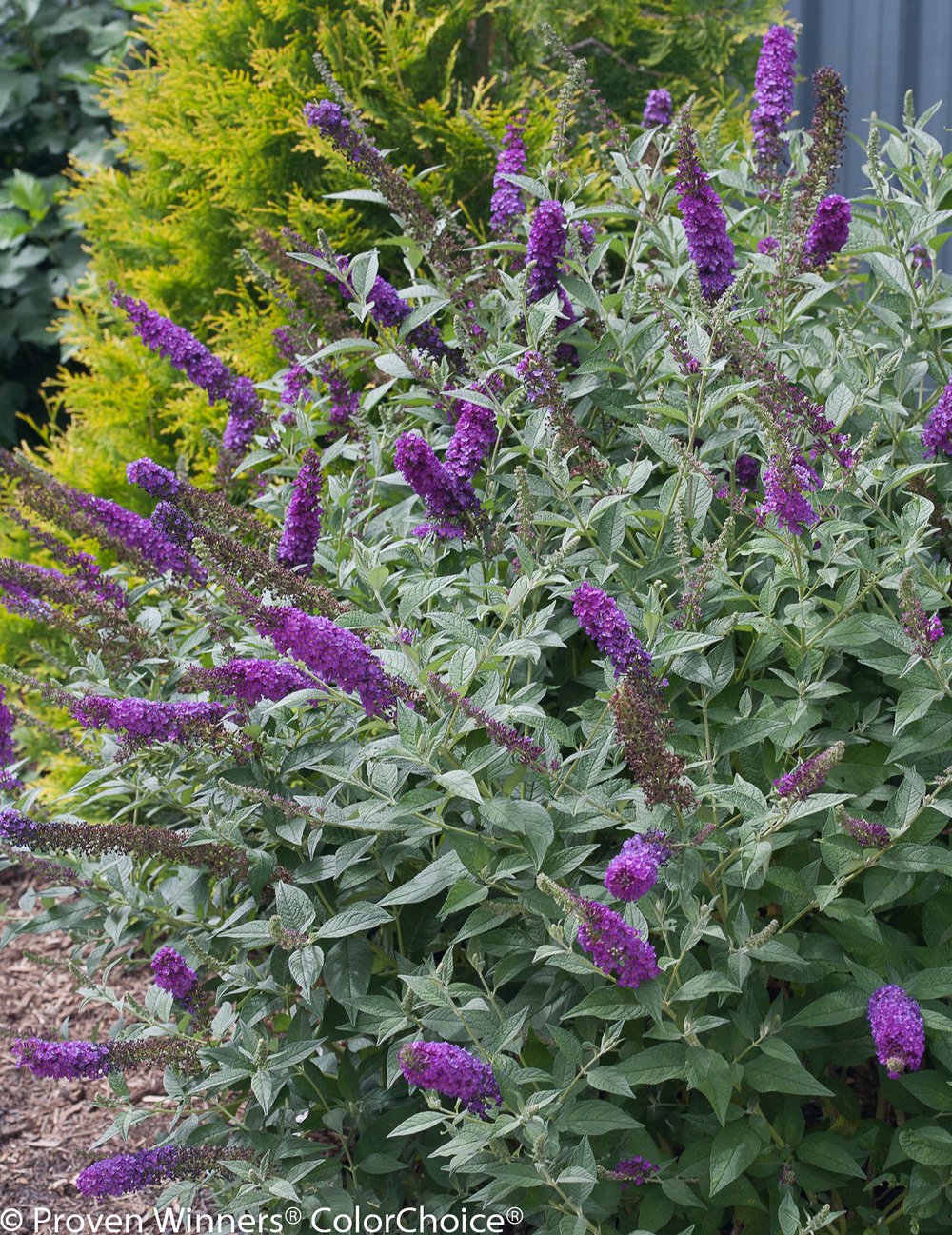
| ||||||||||||||||||||||||||||||||||||||||||||||||||||||||||||||||
|
| |||||||||||||||||||||||||||||||||||||||||||||||||||||||||||||||||
Buddleja HybridsPosted 30th July 2015The Buddleja genus is very promiscuous and most species seem to cross readily even where there is a chromosome number mismatch. A couple of years ago I grew a number of B. albiflora X B. davidii hybrids, most came out intermediate between the parents. They turned out to be fully fertile and I expect they are hexploid like B. albiflora. In turn I have crossed a couple of these hybrids with B. nivea, the reciprocal crosses being very similar. The flower shown is the first B. nivea X (B. albiflora X B. davidii) seedling to open. Okay, so it's not the prettiest flower although the furry foliage and stems are a good feature. The panicle is very open like B. albiflora and the corolla tube is long and hairy within (middle photo), more like the B. albiflora X B. davidii hybrids I have grown (bottom photo) than like the very hirsute B. nivea (below) with its short, fat coralla tube. There is natural hybrid of B. albiflora and B. nivea called Buddleja X alata, sometimes treated as a species in its own right, but my plants also contain B. davidii DNA. The possibility is there to improve the colour and form by further hybridisations whilst keeping the interesting foliage should the plants prove fertile. |
I have five of the Buzz plants (from Thompson & Morgan) properly established in the ground. They are actually rather nice cultivars although the two metre height is more than advertised. They are virtually the same size as the much earlier Butterfly series from East Malling. Sky Blue has put on a particularly fine display of large and numerous flowers already. The panicles are extremely dense and are a pleasant dark violet, not sky blue by any means.
Buzz Magenta and Ivory are both also putting a decent display; Buzz Red (aka Velvet) is a fine colour. It grows taller than Red Chip (aka Lo and Behold Miss Molly, see below) but the flowers are the identical colour. Buzz Lavender is fairly mundane. I am waiting now for Indigo (aka Midnight) and Candy Pink to get underway, to complete the seven strong family. And apparently there are more to follow.
Buzz Sky Blue, looking good. The Butterfly series Purple Emperor is in the background and forms the same size shrub.
Purple Splendor (Hinebud2) is another new dwarf complex hybrid bred by Peter Podaras in the USA and now available in the UK. This one is looking good in a pot, dark green foliage and a bright purple upright flower. I will plant it outside next year to assess its garden performance alongside the Flutterby Petite plants already established. On the subject of the Flutterby plants I have found them to be mostly very fertile, certainly much more so than stated in the publicity and patent applications.
In addition to Purple Splendor Seiont Nurseries (wholesale only) also have Peter's Dreaming Buddleja series: Dreaming Lavender (syn. Hinebud 1, Lavender Veil); Dreaming White (syn. Hinebud3, Angel White); Dreaming Purple (syn. Hinebud4); and Dreaming Orange. This last one is a bit of a mystery but appears to be a B. marrubiifoia hybrid.
The hybrid Purple Splendor, kindly provided by Seiont Nurseries.
Buddleja loricata is flowering now and I have never seen so many blooms before, probably because it has grown quite large. The white flowers are not especially remarkable and are in cymes rather than panicles but the scent is amazing - citrus with a hint of spice. It is now overgrowing my greenhouse and will have to be pruned once the flowers have finished. I must also ensure it is dead-headed as it is self-fertile and will set copious seed.
Next month will see all the B. davidii cultivars and hybrids flowering - I can't wait!
I noticed this spring that Buddleja loricata is producing a large number of small suckers around the base. I don't know why although the plant still looks perfectly healthy and is about to flower profusely. These are clearly suckers and not seedlings as the photo shows and they can be pulled up and rooted quite easily. B. loricata is a South African species and yet very hardy, thrives in the snow and does well in the UK; it deserves to be more popular.
I've often wondered why there are so few Buddleja globosa cultivars. Most look more or less the same except for the pale yellow HCM98017. I've had a go at breeding some new plants, unfortunately I've found the seedlings to be very temperamental and only raised a handful to maturity. One has just flowered and appears to be male; it has the yellow colour of B. x weyeriana Sungold rather than the more usual orange. Certainly much paler than the common male cultivar shown and paler than B. globosa Lemon Ball.
Left, the common orange male cultivar and right, my seedling with yellow flowers.
Buddleja heliophila is a species that has found itself renamed as (or reduced to a synonym of) B. delavayi. I am sticking to the old name for now as that was how it was labelled when it came to me. Also this is the plant described as B. heliophila by Cotton (click here to read) in his paper on the spring flowering Buddlejas. This particular plant flowers both in the spring (now) and then again in the autumn. It has soft lilac flowers that have a remarkably fine and strong rose scent, that alone makes it well worth growing. My plant is still small and it is struggling to establish as it expends so much energy on flowering. I am unsure of its hardiness hence I am growing it in a pot and keeping it undercover for the winter until it becomes stronger.
UNIQUE is a new Buddleja hybrid from Peter Moore, curator of the Longstock Nursery Buddleja National Collection; a British introduction after all those new American cultivars. Deriving from B. alternifolia, it flowers continuously through summer and is sterile. (Photo courtesy of Peter Moore)
We have had two weeks of fine weather so things are moving on now. Buddleja agathosma has flowered under cover although its twin outside is about two weeks behind. As you can see from the photo, after the flowers open the new growth can begin. My plants are still small, only a year or two old; eventually they should grow into very large woody shrubs more than 3 metres tall. Other B. crispa varieties such as B. sterniana will flower soon, if not already doing so. These two spring flowering Buddlejas do remarkably well against a sheltered south-facing wall even in the Midlands, 220 metres above sea-level.
A hybrid that also does well against a sheltered wall is
Winter Sun, a cross of B. officinalis and B. araucana. The Longstock Nursery describes this as a semi-tender hybrid but mine has survived two admittedly mild winters, kept all its leaves and flowered both springs, whereas it never flowered when kept in a large pot in a greenhouse and always looked sad. It relishes its freedom and is rapidly growing into a large shrub. I shall severely prune it once the flowers have finished.
Buddleja agathosma is flowering now under cover.
It always seems to take ages for the spring to arrive when you are waiting to for things to start growing again. March stayed fairly cold and dreary, only now the sun has appeared and the temperatures are rising. Not much is flowering yet except Buddleja officinalis, which has been blooming for over a month under cover.
Buddleja limitanea is considered borderline hardy for most of the UK but I have found it to be more than suitable for growing outdoors. It is often sunk as a dwarf form of B. forrestii, although it differs in several ways. This winter hasn't been very harsh and the lowest temperature hasn't been much lower than minus five celcius. B. limitanea has retained its leaves and is the first to start growing again. Already it has plenty of new growth whereas many of the common B. davidii types are still fairly dormant. Here's hoping it will flower well in summer.
Every spring I am impressed by B. davidii Moonshine, the bright yellow foliage really stands out when everything else seems brown. It forms a very nice compact shrub and deserves to be better known. Even the bright pink flowers are better than average, which are very like the popular B. davidii Border Beauty.
B. limitanea has proved hardy although it hasn't really been tested this year.
Moonshine has great yellow foliage that was kept all through the winter.
Buddleja officinalis is always the first species to flower in the new year. It's not fully hardy in the UK and best grown in a large pot and removed to the greenhouse for the winter. It can grow outside but the flowers will usually be lost to the hard frost as the flower buds are held dormant all winter and only open once the temperatures starts to warm again.
Not long to wait now, for all the other spring flowering species to start flowering.
The Buzz family has a new member called Candy Pink. This range of diminutive Buddleja, bred by Charles Valin at Thompson and Morgan, is growing at the rate of one per year and Candy Pink joins Buzzes Indigo, Red, Ivory, Sky Blue, Magenta and Lavender. The Buzz plants are not as small as some of the American hybrids, reaching about to 1.5 metres (4-5 foot) if pruned annually, but they perform better in the UK climate than the competition, the Lo and Behold Chips and Flutterby Free Petite.
Buzz Candy Pink will be available from Thompson & Morgan this spring and may be ordered now.
Photo courtesy of Thompson and Morgan.
Taxonomists, those that classify species, tend to be either "Lumpers", those that try to reduce families to as few species as they can justify, or "Splitters", those that will split very similar plants into separate species due to relatively minor differences. The generally accepted organisation of African and Asian Buddlejas was published by Leeuwenberg in 1979. He lumped a number of species into Buddleja crispa as he believed the differences were down to regional variation rather than speciation. Leeuwenberg didn't even afford those he sunk under B. crispa varietal names. So, for example, B. farreri became just another B.crispa rather than B.crispa var. farreri
In horticulture the old species names have continued to be used rather than more cumbersome names based on the accepted taxonomy. I written a page that aims to describe the group of plants:
Right, the summer flowering "species" B. crispa.
This year the Buddleja Diary has a new look - rather than a monthly entry I will add stories, news and reports as they come along. The old format was a bit messy but the new look should be more straightforward. The photos will be a similar width and can be enlarged in a new overlaid window (by the magic of Lightbox). And it should all look the same in most browsers too. Navigation for the whole site and some useful links are down the left-hand column.
Here are a few antique prints to enjoy, click to enlarge them.
Buddleja globosa, the first of the genus in cultivation in Europe.
A very old French print, circa 1800.
| ||||||||||||||||||||||||||||||||||||||||||||||||||||||||||||||||

